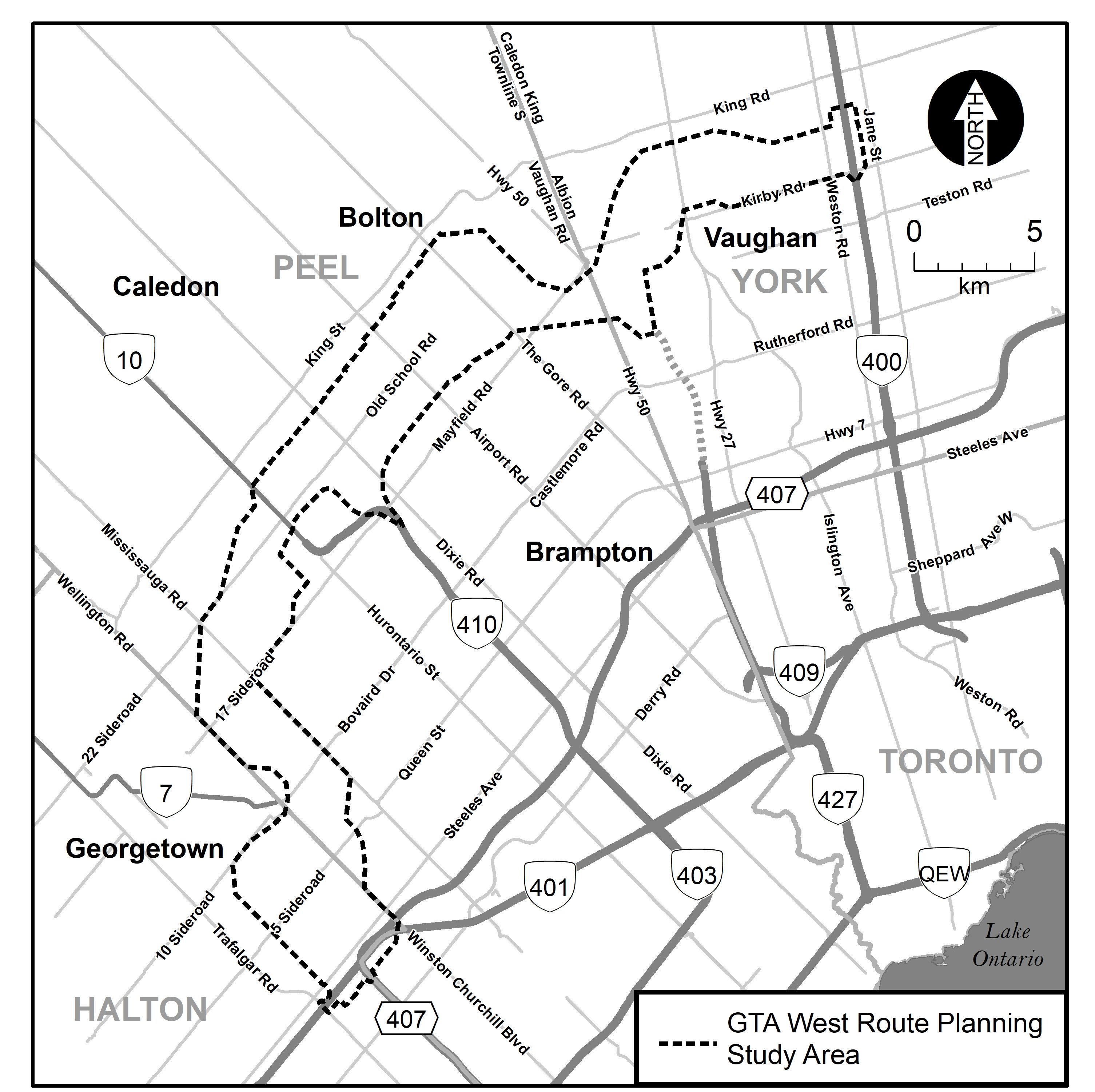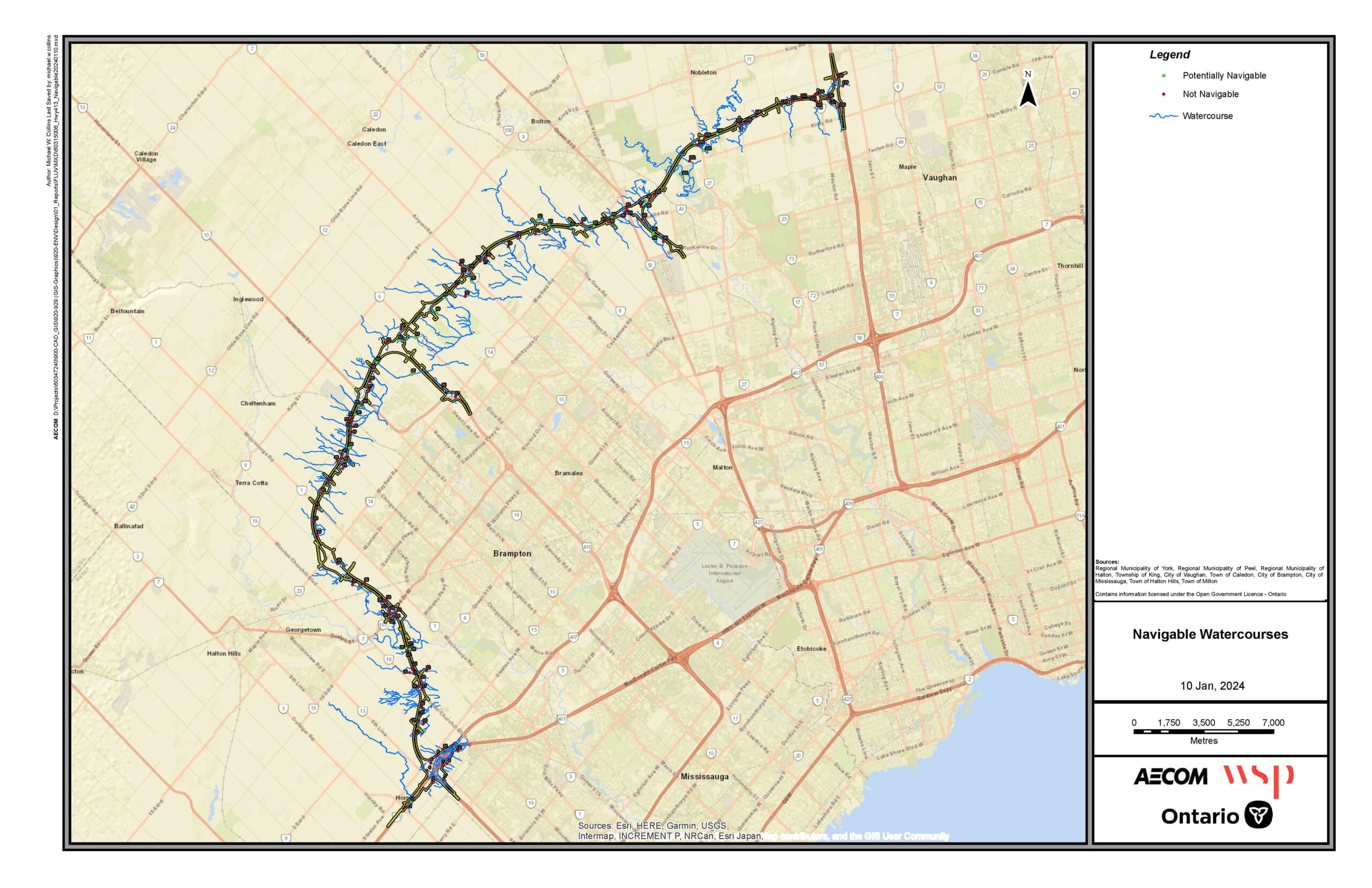Study Overview
Stage 1 of the GTA West Transportation Corridor Route Planning and Environmental Assessment Study considered all transportation modes and their ability to address the future transportation demands by 2031. The outcome of Stage 1 was a multimodal Transportation Development Strategy. This strategy made recommendations for optimizing the existing transportation network, improvements to non-roadway transportation modes such as transit and rail, widening of existing highways, and a new transportation corridor.
Stage 2 of the Ministry of Transportation’s GTA West Transportation Corridor Route Planning and Environmental Assessment Study was initiated in early 2014 to build upon the recommendations from the first stage. Stage 2 is focusing on identifying the route and developing the preliminary design for the new multimodal transportation corridor. The new corridor will extend from Highway 400 (between Kirby Road and King-Vaughan Road) in the east to the Highway 401/407 ETR interchange area in the west, and will feature a 400-series highway, a transitway, and potential goods movement priority features. As part of Stage 2, route alternatives for a new multimodal transportation corridor have been generated within the Route Planning Study Area illustrated below.

The 2006 Growth Plan for the Greater Golden Horseshoe forecasted the population of the area to grow to 11.5 million by 20311. This will result in approximately 1.5 million additional trips (cars and trucks) per day in the GTA West study area by the year 2031. Without changes, by 2031 the average commute times are expected to increase by 27 minutes a day2. The updated 2017 Growth Plan for the Greater Golden Horseshoe forecasted the area to grow to 13.5 million people and 6.3 million jobs by 20413.
The Greater Golden Horseshoe is an economic driver for the province and addressing transportation needs in the Greater Golden Horseshoe is essential to the competitiveness of our economy.
The GTA West Transportation Corridor is a vital undertaking in support of providing the transportation infrastructure to meet coming growth in both population and employment - and will deliver multiple benefits including:
- Greater connectivity between urban growth centres
- Enhanced people and goods movement
- Improved commuting
- Greater economic vitality
This new multimodal transportation corridor is only one component of the full suite of multimodal recommendations that are documented in the Transportation Development Strategy (PDF 19 MB) that was completed in November 2012 as part of Stage 1. These recommendations included transit improvements, transportation demand management measures (e.g. expansion of the Ministry’s overhead electronic message signs), opportunities to optimize the existing transportation system, as well as widening of several provincial facilities in the western Greater Toronto Area. All of these recommendations will be reviewed and pursued separately by MTO and other agencies, as appropriate.
In addition to examining alternative routes for the new multimodal transportation corridor, the Project Team is examining alternatives for interchanges, bridges, and other key elements of the corridor. A comprehensive analysis of technical and environmental factors is being undertaken in consultation with the public, municipalities, Indigenous communities, government agencies and other stakeholders to identify the preferred route for the new multimodal transportation corridor.
The purpose of this website is to provide interested parties with access to study information and access to the Project Team that is carrying out this study. Reports and other documents developed during Stage 1 of the study are still available on this website and can be accessed through the Background Materials section of the site. Meaningful consultation with stakeholders is important in shaping the outcome of this study. We encourage you to review the content of this website and provide us with your feedback. Details on public consultation activities being undertaken during this study are included in the Consultation section of this website. An Environmental Assessment Report (EA Report) will be prepared and made available for public review at the completion of the study. Refer to the Environmental Assessment Process page for more information.
If you wish to be added to our mailing list or submit comments or questions, please visit the Contact Us page.
1 Ontario Ministry of Municipal Affairs, Growth Plan for the Greater Golden Horseshoe (2006)
2 Metrolinx, The Big Move (2008)
3 Ontario Ministry of Municipal Affairs, Growth Plan for the Greater Golden Horseshoe (2017)

